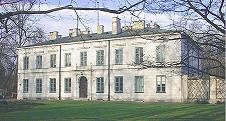XVIII-wieczna rzeźba kamienna w Wielkopolsce
Eighteenth-century Stone Sculpture in Great Poland
Author(s): Rafał PlebańskiSubject(s): Fine Arts / Performing Arts
Published by: Krajowy Ośrodek Badań i Dokumentacji Zabytków
Keywords: Great Poland; height of the Baroque; Rococo; Habsburg Silesia; cult of St. John Nepomucen; eighteenth century; cult statutes; Cistercians; palace in Pawłowice
Summary/Abstract: Stone sculpture in Great Poland during the height of the Baroque, its decline and the Rococo, still awaits a suitable monographic study. Its assorted connections with Silesian art, shown in this text, deserve to be discussed on a wider scale. The intensification (present in figural sculpture) of the cult of the Immaculate Conception of the Holy Virgin Mary, spreading from Italy via Austria and Habsburg Silesia, was not accidental. The adaptation of the Bohemian cult of St. John Nepomucen, as well as formal imports and, predominately, the migration of Silesian artists to Great Poland, comprise firm evidence of a revival of artistic contacts with Silesia. In the domain of stone sculpture, those contacts became livelier in the second quarter of the eighteenth century. The problem outlined in the presented article calls for a continuation, consisting of inventories of works, research concerning patronage, the range of the impact exerted by the artists and their workshops, and even studies cncerning material. The interest of researchers is stirred by cult statutes of the Immaculata, St. John Nepomucen or St. Lawrence as well as by stone architectonic sculpture and, predominantly, by increasingly present stone garden sculpture - a true novelty in the residences of the gentry of Great Poland. The foremost local patrons of stone sculpture were the Cistercians, especially the abbots, and the local magnate families: the Raczyńskis, the Mełżyńskis, and the Sułkowskis — creators of the most magnificent residence of the period and, simultaneously, owners of the Bolesławiec quarries. The history of sculptors working in Great Poland remains frequently unknown; we have slightly more information only about Augustyn Schöps, a versatile artist and the author of The Rape of Proserpine in the Poznań market square, and Wenzel Böhm, author of sculptures crowning the façade of the palace in Pawłowice.
Journal: Ochrona Zabytków
- Issue Year: 1999
- Issue No: 3
- Page Range: 280-295
- Page Count: 16
- Language: Polish

